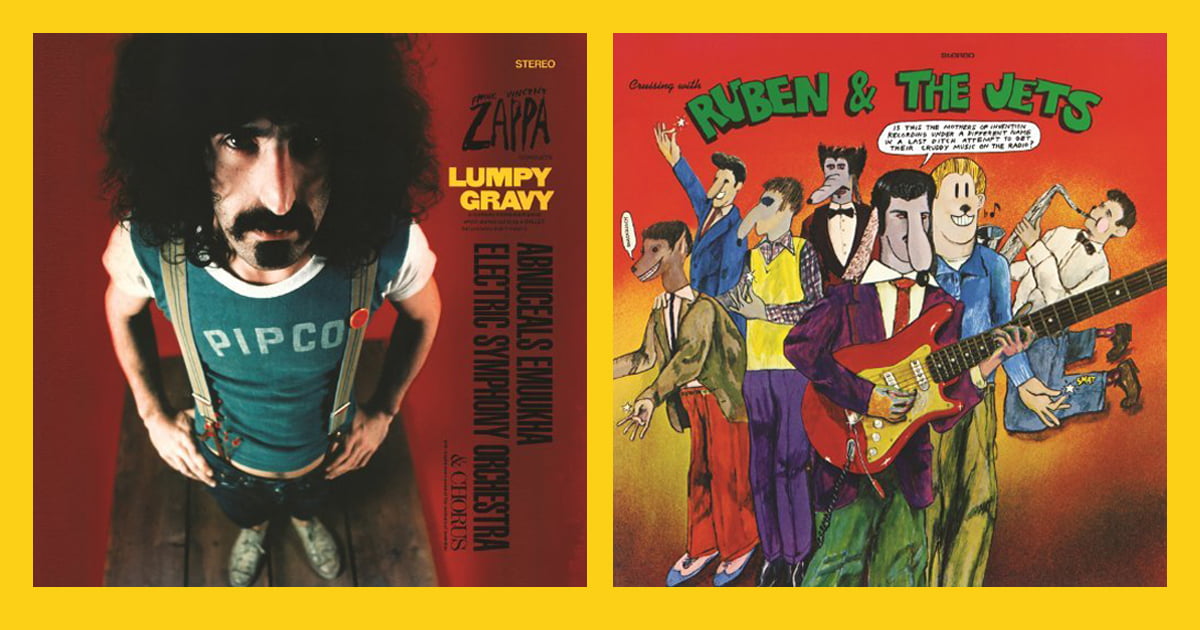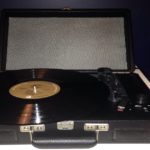It’s the time of year for saving money!
For many people in the audiophile-centric record-buying public, a fistful of factors matter most… in the grand scheme of things… when it comes to reissues.
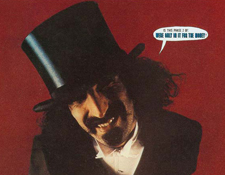 I mean… some recordings get reissued that are either so super rare — or simply don’t warrant enough financial attention for the average label to put much effort into it– that ANY re-releaseis considered a good thing.
I mean… some recordings get reissued that are either so super rare — or simply don’t warrant enough financial attention for the average label to put much effort into it– that ANY re-releaseis considered a good thing.
I was perfectly happy buying a $10 reissue of the Barbarella movie soundtrack on red vinyl which served me just fine for a couple of years until I came across an original pressing at a reasonable price… Its not that crucial a recording, if you know what I mean.
But, then there are the revered catalogs by the likes of The Beatles, Miles Davis, The Rolling Stones, Bill Evans, Pink Floyd, Thelonius Monk and Led Zeppelin, where the fans really care passionately about what they are buying in a reissue.
Fans of Frank Zappa’s catalog typically fall into this latter group of audiophile-flavored fans who are fairly picky and often detail oriented.
People like you, Dear Readers. People like me.
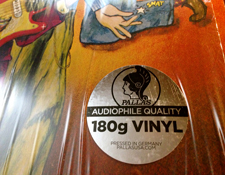 We want to know about the source tape used to make the reissue and how much closer the producers got us to hearing the original master recording — is it the genuine first master or a first generation safety copy or some multi-generation duplicate passed down along the years to various and sundry band members, engineers or producers? We want to know whether said tape was originally recorded in the analog domain or if it was early digital or some hybrid in-between and how it was transferred to the long playing disc format — as well as high resolution digital formats like Blu-ray and HD downloads — these details can impact the sound positively or adversely.
We want to know about the source tape used to make the reissue and how much closer the producers got us to hearing the original master recording — is it the genuine first master or a first generation safety copy or some multi-generation duplicate passed down along the years to various and sundry band members, engineers or producers? We want to know whether said tape was originally recorded in the analog domain or if it was early digital or some hybrid in-between and how it was transferred to the long playing disc format — as well as high resolution digital formats like Blu-ray and HD downloads — these details can impact the sound positively or adversely.
Then comes the notion of how the actual recording was mastered, both on the original tape — ie. with compression and other studio sweetening to help the recording pop on the radio of the period, usually a major concern for “hit” recordings — as well as in the vinyl LP mastering process. Those are two different activities, mind you and, yeah, we care about that too, especially when a respected engineer is handling the project to make sure it comes out sounding as good as possible.
There is the matter of where and how the actual record was pressed, a factor which many collectors now understand can make a big difference in how the final record can sound — you can have the best master recording but if it is pressed sloppily on crummy quality vinyl, the end result will be noisy and dissatisfying. Finally, there are the little details relative to the actual production aesthetics of the album package … those things which made the original release special and which — ultimately — can impact the impulse purchase among us record collectors – – the overall value proposition.
In the case of a number of recent Zappa reissues I have received for review from Universal Music (full disclosure), the label handling the Zappa estate’s reissue series, I am happy to report that the overall quality of the releases seems to be very high on all counts.
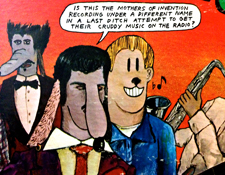 For example, the reissue of the 1967 release Lumpy Gravy was created from a pristine safety copy of the master tape, pressed on 180-gram vinyl at the prestigious Pallas plant in Germany. Likewise, Zappa’s 1968 doo-wop rock ‘n’ roll homage Cruising with Ruben and the Jets ups the ante by being remastered from the original analog recording for the first time since 1968.
For example, the reissue of the 1967 release Lumpy Gravy was created from a pristine safety copy of the master tape, pressed on 180-gram vinyl at the prestigious Pallas plant in Germany. Likewise, Zappa’s 1968 doo-wop rock ‘n’ roll homage Cruising with Ruben and the Jets ups the ante by being remastered from the original analog recording for the first time since 1968.
For those not in the know, the master recordings from this era of Zappa’s Mothers of Invention were not well cared for initially by MGM Verve. And by the time Zappa got them back many years later, he found many of them were damaged from improper storage. Thus making a new release off of a pristine safety copy may be the best possible option at this point in time.
So, all this information is useful and good but at the end of the day the big thing that most of you, Dear Readers, really care about is whether the albums sound any good, especially when compared to often-rare original pressings. In the case of these new reissues, the answer in short is: yes! The reissues sound very much like the original albums and in some instances a bit better.
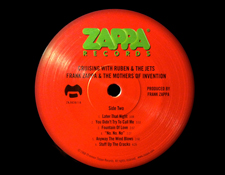 Cruising with Ruben and the Jets sounds clearer and more distinct than the two original Verve Records pressings I own. It’s all in the little details of instruments. For example on “Later That Night” you can make out the distinctive metal-on-metal “cah-ching” of the tambourine hits — you can more clearly make out the individual little cymbals on the tambourine clanking against one another… And, suddenly you can much more easily make out the lyrics very clearly. For the first time, I noticed a cool ghosting voice singing behind the lead vocal on this song on the choruses — it IS there on the original, but it now becomes more apparent to the listener on the reissues. On “Any Way The Wind Blows,” the acoustic guitars pop out of your speakers really sweetly. There are many other nice details like this newly apparent which were subdued on the earlier versions.
Cruising with Ruben and the Jets sounds clearer and more distinct than the two original Verve Records pressings I own. It’s all in the little details of instruments. For example on “Later That Night” you can make out the distinctive metal-on-metal “cah-ching” of the tambourine hits — you can more clearly make out the individual little cymbals on the tambourine clanking against one another… And, suddenly you can much more easily make out the lyrics very clearly. For the first time, I noticed a cool ghosting voice singing behind the lead vocal on this song on the choruses — it IS there on the original, but it now becomes more apparent to the listener on the reissues. On “Any Way The Wind Blows,” the acoustic guitars pop out of your speakers really sweetly. There are many other nice details like this newly apparent which were subdued on the earlier versions.
On Lumpy Gravy, the symphonic sections really soar — and in someways sound better than the original, especially as you turn up the volume on your amplifier. The album is mastered overall a bit quieter than the original pressing, but when you play it louder, you get a very nice perspective on the music
Now… on to geekier things for the hardcore Zappa fan: for the first time since 1968 (as far as I know) Cruising with Ruben and the Jets now includes the rare insert instruction sheets (such as “How to Comb and Set a Jellyroll” hair style) which had only been reproduced once before in the pricey Old Masters box set from the 1980s (that is the one with the re-recorded bass and drums version of the album). Finding an original pressing with the inserts was akin to finding the proverbial needle in a haystack. As a lifelong Zappa fan-collector, I know that I’ve never seen an original copy with the inserts at any price anywhere. These reissues are not cheap photo copies but nice printed glossy stock sheets.
My only nit-pick on these reissues that they did not go the extra step to recreate some sort of near period-accurate record label… That they didn’t use that actual Verve Records labels is likely due to licensing issues from the original company now owns the Verve logo. So, instead what you get are labels owned by the Zappa estate, one side being a modern update on the Barking Pumpkin Records label (from the 80s into the 90s) and the other being the bright red Zappa Records label (which he started in the late 70s). Accordingly, they also removed the Bizarre Records and Verve Records logos from the cover.
 These are admittedly stupid little details which some of us collectors get hung up on. Don’t worry: I won’t go into the type of cardboard used to make the covers and such. You can’t play the labels and the covers and these certainly don’t look offensive so what the heck, right? Borrowing a paraphrased sentiment from another Zappa album from the period: I’m not that hung up!
These are admittedly stupid little details which some of us collectors get hung up on. Don’t worry: I won’t go into the type of cardboard used to make the covers and such. You can’t play the labels and the covers and these certainly don’t look offensive so what the heck, right? Borrowing a paraphrased sentiment from another Zappa album from the period: I’m not that hung up!
Anyhow, if you are an existing Zappa fan or just Zappa-curious, these new reissues seem to be a good, reasonably priced way to explore Frank’s music in a respectful way that allows the listener hear what it sounded like back when it was first released. Good stuff.
Final note: Apologies for the over-the-top Z-centric headline. I couldn’t resist.
